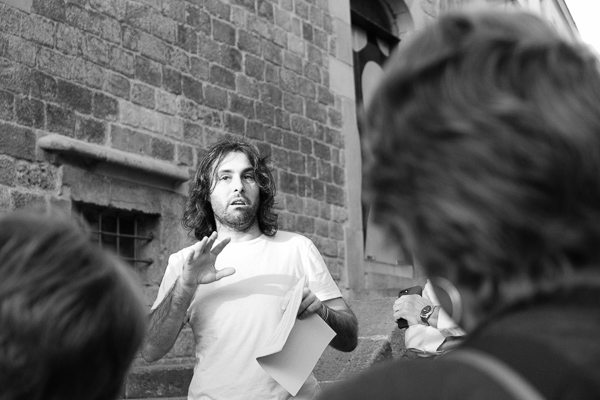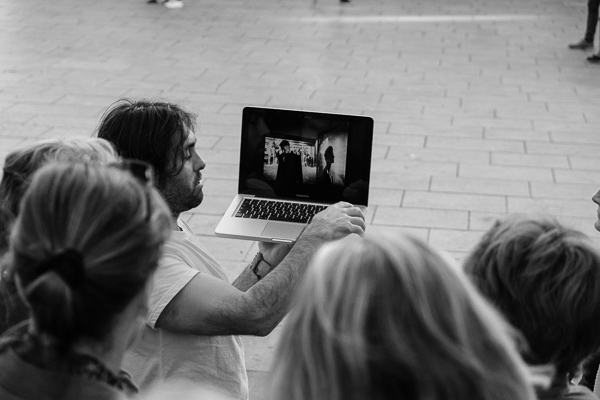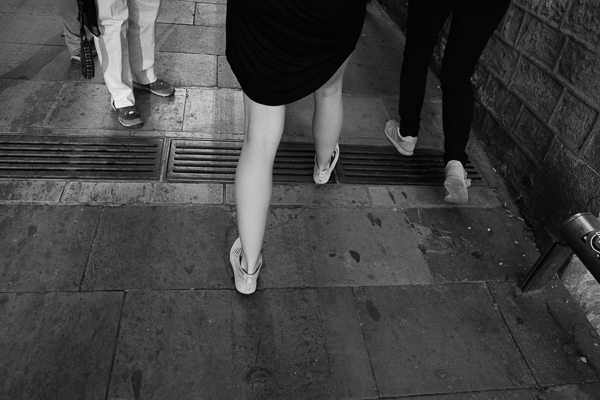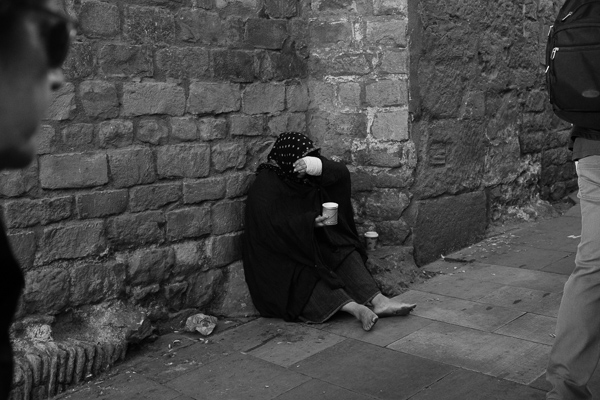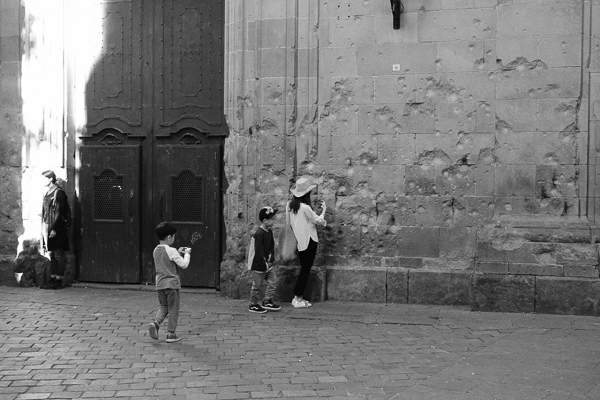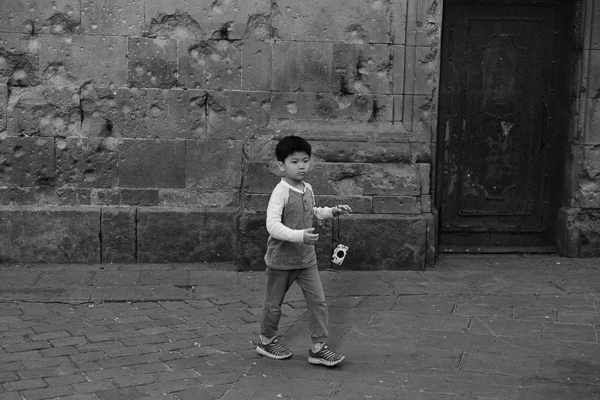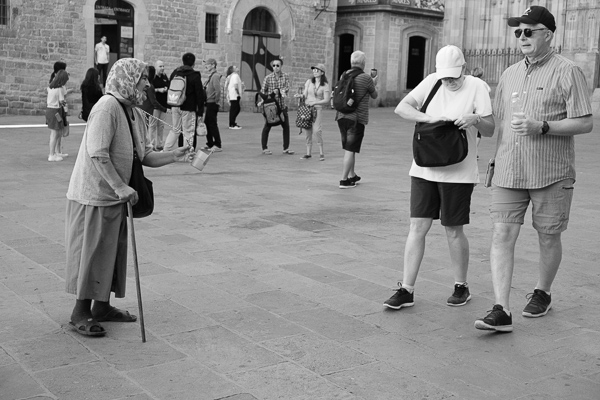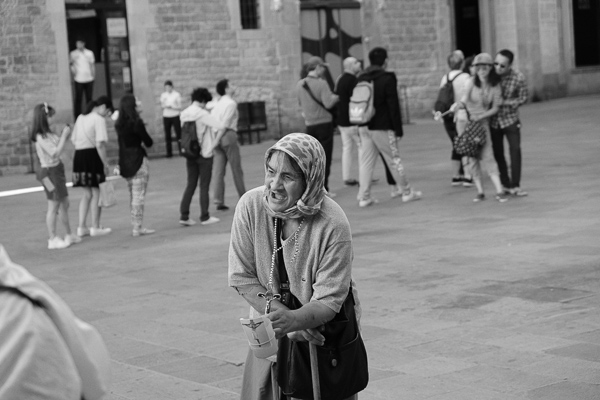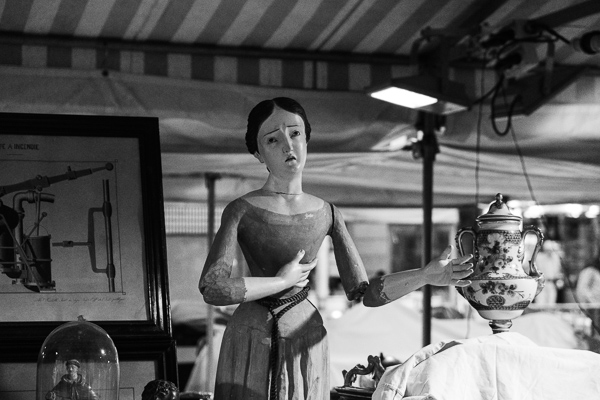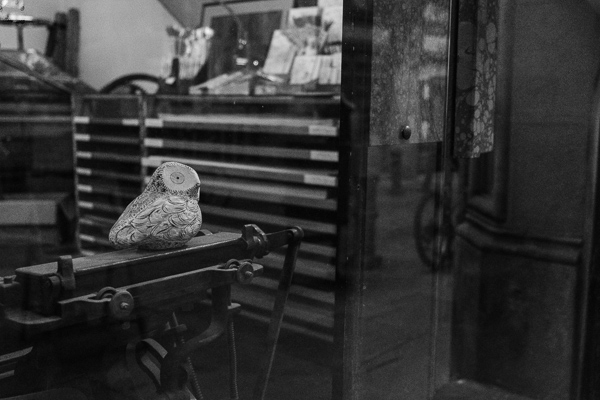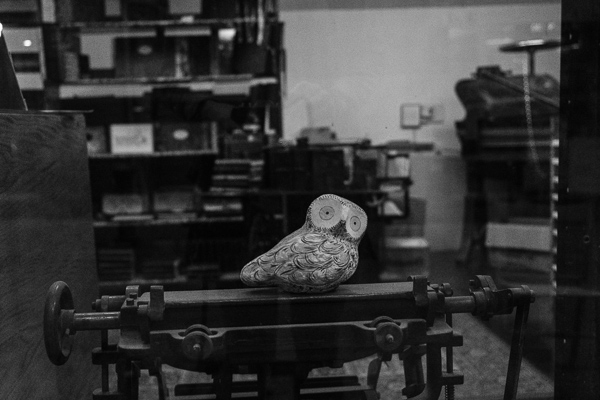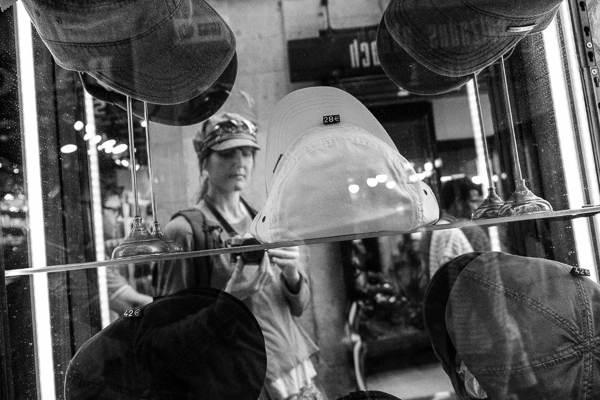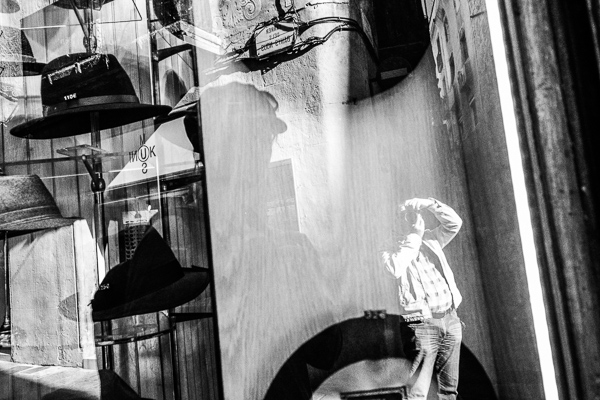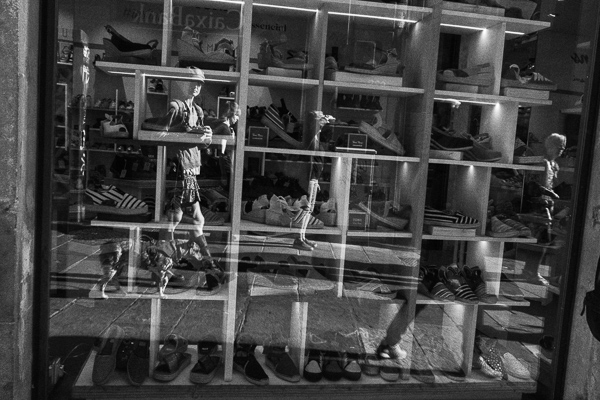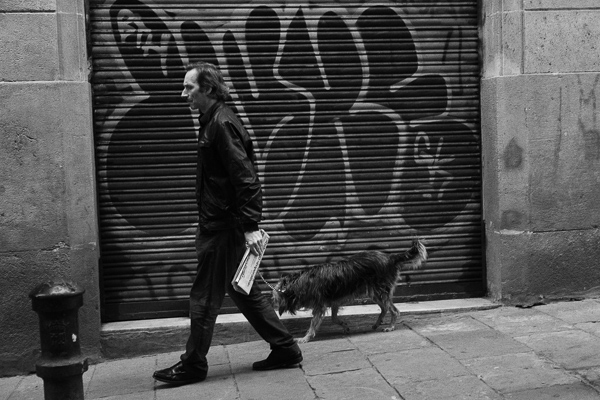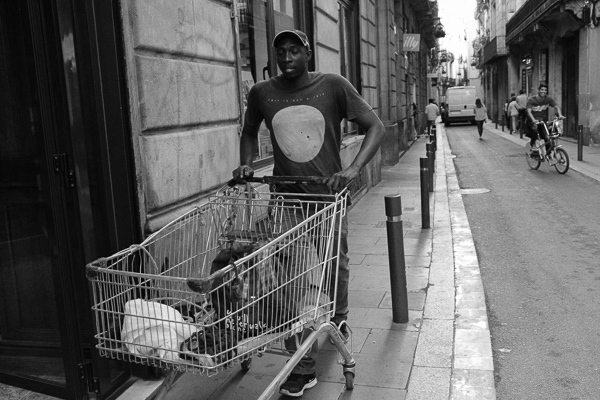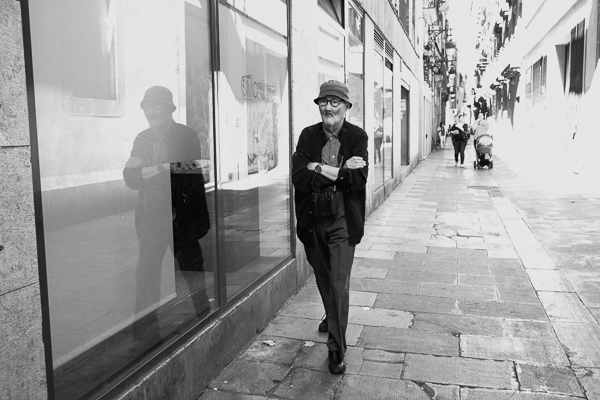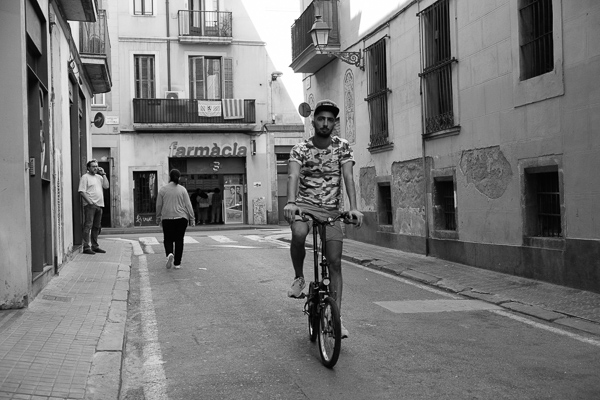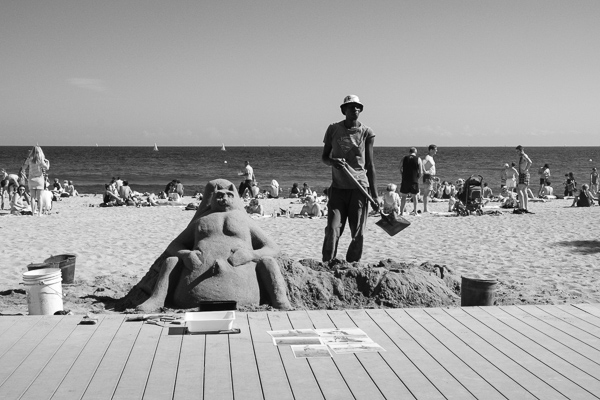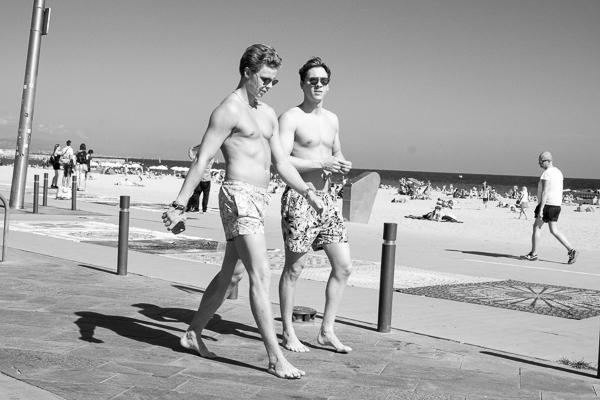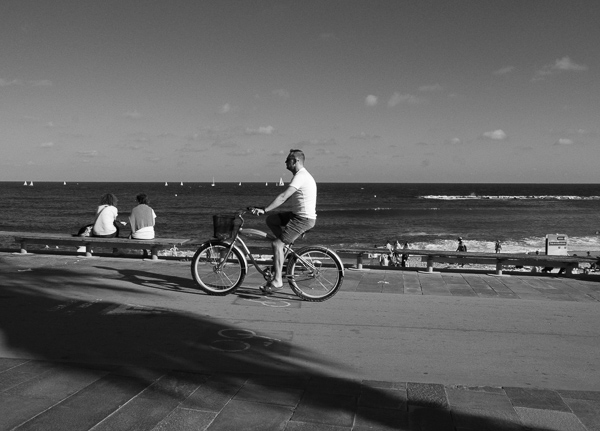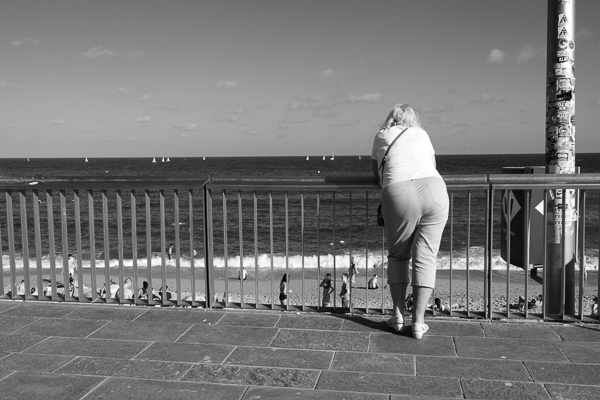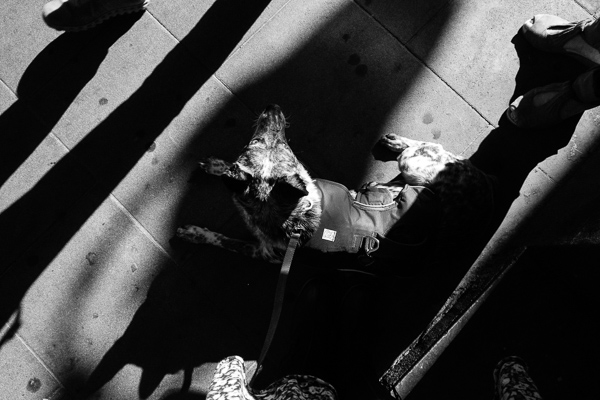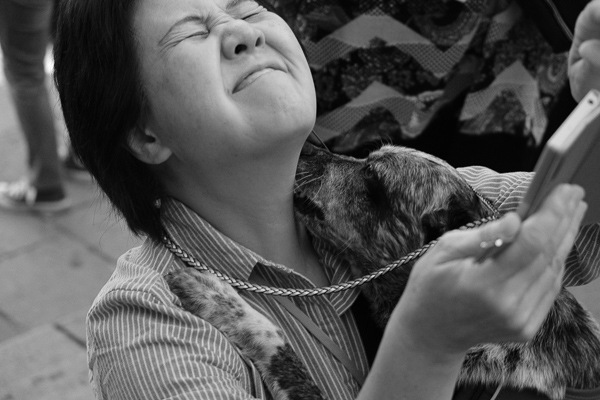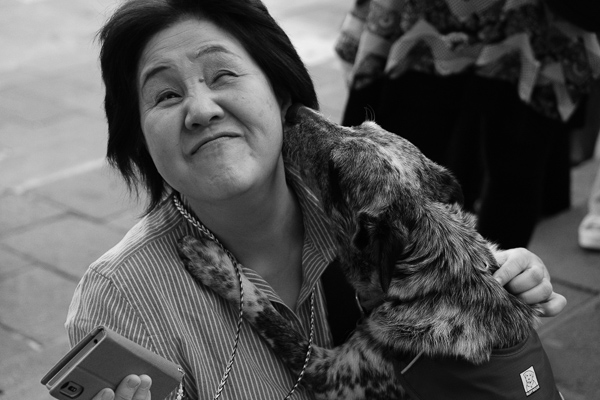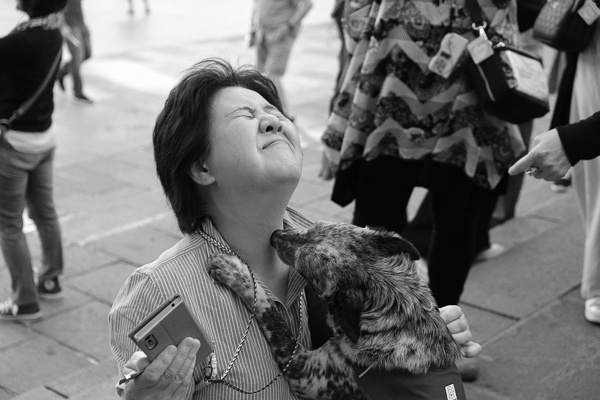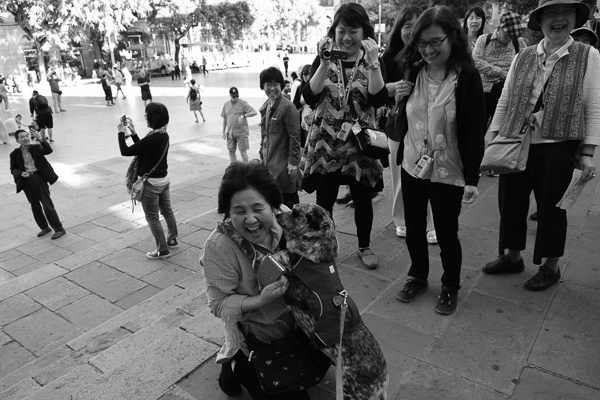I took a workshop on the streets of Barcelona with Mingo Venero. A documentary photographer with an exquisite, artistic eye, Mingo’s work truly inspires. If you’re unfamiliar with his unique style, have a look at his website here: http://mingovenero.com/en/
I’ve admired Mingo’s photos on Instagram so when I heard he was offering a walking workshop in Barcelona, I decided I could make an exception to my no-guided-tours-rule.
Our group met on the steps of the Catedral de Barcelona at 9am. It was hard not to be distracted by the incredible surroundings of the square whilst Mingo presented an introduction to the day’s work. The schedule went something like this…. follow Mingo around the city, take lots of photos, talk about photography, learn some history, and have some lunch on the beach. Pretty rough, eh?
It felt strange to hear a photographer explain street photography; something that seems so instinctual. But I was captivated by a photo essay Mingo put together using just six photos he had taken in the city over the course of five years. He showed us the essay with his laptop, and we stood above him on the stairs as thickets of tourists made mazes on the stones of the square.
Mingo explained how he makes a sentence using only photos (no captions), and encouraged us to utilize his concepts in our own editing. Constructing cohesive photo essays is something i struggle with greatly. Photography is a coping mechanism that keeps me afloat in the swirling emotional sea of conscious life. But I often feel that my photography is fragmented; consisting of a great many single images that either don’t relate at all or are repetitions of a similar scene. I hit emotional walls with the task of constructing photo essays out of too many images the way a writer gets blocked up by blank pages of paper. Adrift on my sea, I fear drowning by weight of my own life raft.
So I’ve thought a lot about what Mingo said, coupled with the memory of his breathtaking images, and I’m humbly determined to apply it to my own process.
From the Catedral we moved through Barri Gòtic, El Ravel, and finally, El Born neighborhoods. Barcelona is a mecca of unbelievable architecture, but I was much more interested in the colorful characters crowding the dark, narrow streets and the faces I saw staring at me from behind glass or under tents in alleys.
The workshop ended with lunch on Barcelona’s waterfront, where we learned a fascinating bit of history. The beautiful golden sandy beach? All new. Prior to the 1992 Olympics, Barcelona’s waterfront was a typically rocky Catalonia shoreline. Along the water was a row of businesses… fish markets and bars and open air vendors… the back doors opened to the water, where they threw their refuse, and the front doors to the street. Along the rocks between the buildings and the water was a gypsy community. In preparation for the Olympics, the gypsies and their businesses were kicked out, their buildings and homes demolished, and the rocky shoreline blasted to pieces. The rocks were moved to make an extensive breakwater, and sand was trucked in from further down the coast. Barcelona’s new blonde beach and sparkling white boardwalk is a landscape that tells little of its colorful cultural past. I couldn’t help but think that I would prefer the former trend… for now it’s just another white waterfront catering to the whim of the wealthy white man.
P.S. I couldn’t end this post without some photos of Luna, of course, who attended the workshop with me…
And made at least one essay… easy:

